#Independence National Historical Park
Text
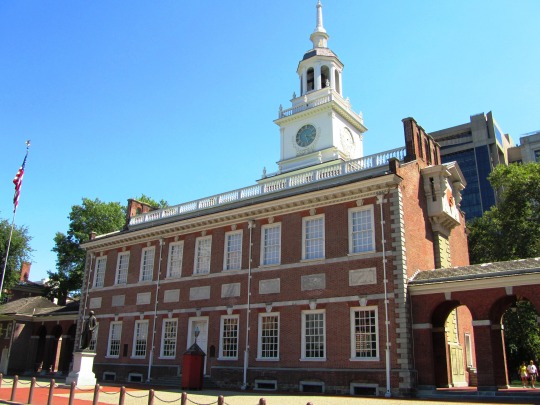



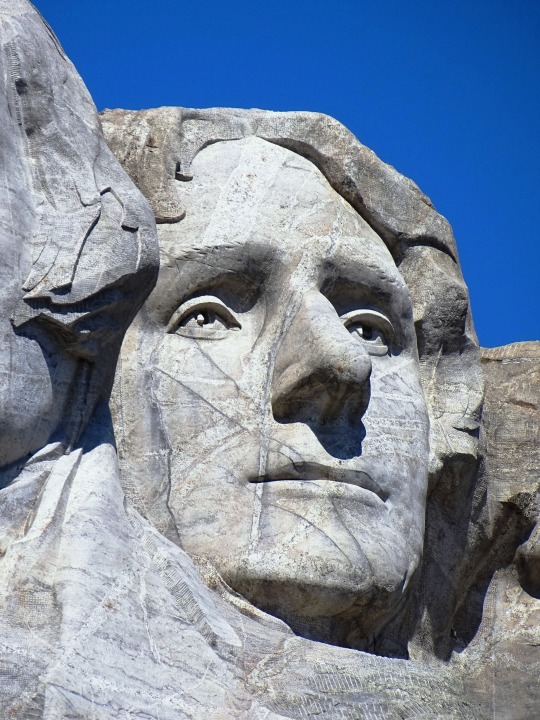
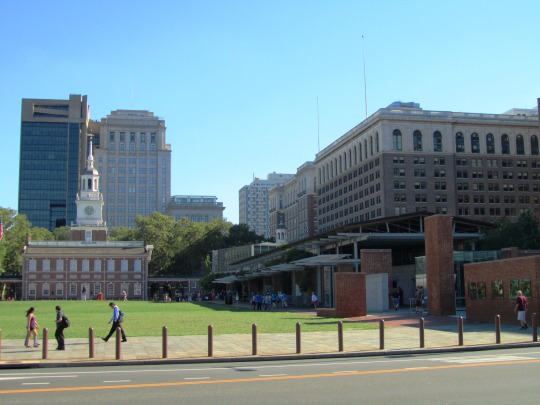
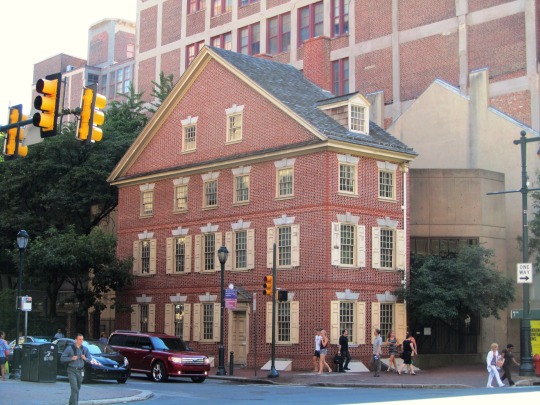

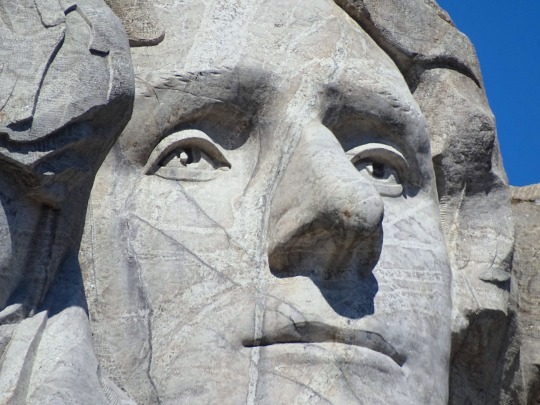

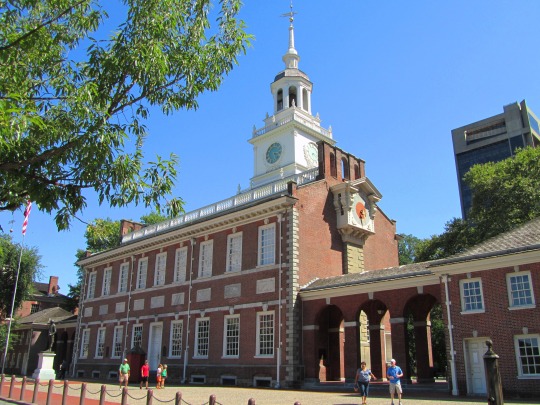
The first formal public readings of the Declaration of Independence of the United States took place on July 8, 1776 in Philadelphia by John Nixon in the yard of Independence Hall.
#first formal public reading#Declaration of Independence of the United States#8 July 1776#anniversary#US history#travel#original photography#vacation#tourist attraction#landmark#cityscape#architecture#Philadelphia#Independence Hall#Pennsylvania#exterior#Independence National Historical Park#520 Chestnut Street#Independence Mall#Congress Hall#Declaration House#Gutzon Borglum#Thomas Jefferson#Mount Rushmore National Memorial#South Dakota#summer 2013#2019
9 notes
·
View notes
Text
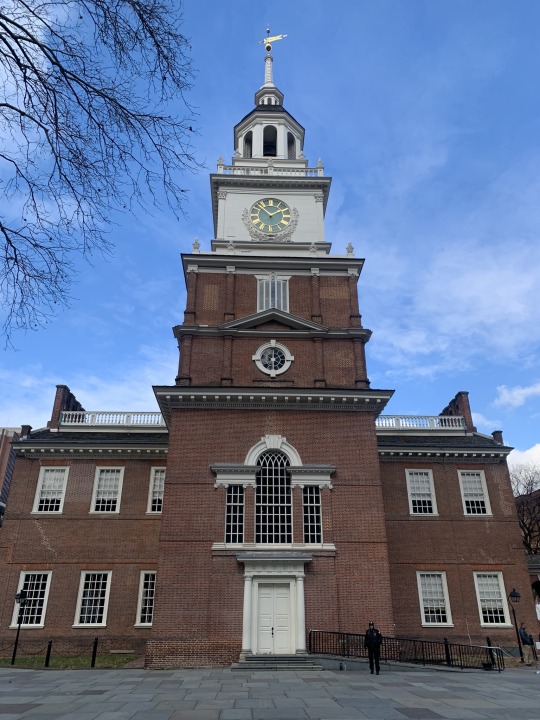






January 7th, 2023
Independence Hall, Philadelphia, Pennsylvania
#photography#philadelphia#pennsylvania#pa#city of brotherly love#history#revolutionary war#early american history#congress#congressional history#first congress#continental congress#george washington#founding fathers#independence hall#independence national historical park#national historical park#national park service#nps#america#usa#united states of america
4 notes
·
View notes
Text
Pennsylvania: 10 Top Rated Places to Visit in Pennsylvania
Pennsylvania: 10 Top Rated Places to Visit in Pennsylvania
There are many places to visit in Pennsylvania. This state spans the Mid-Atlantic, Northeast, Appalachian, and Great Lakes regions. Its many diverse attractions will appeal to visitors of all ages. From historical landmarks to modern cities, Pennsylvania has something for everyone to experience.
For a fun day out, consider spending a day at the Longwood Gardens. The gardens host various events…
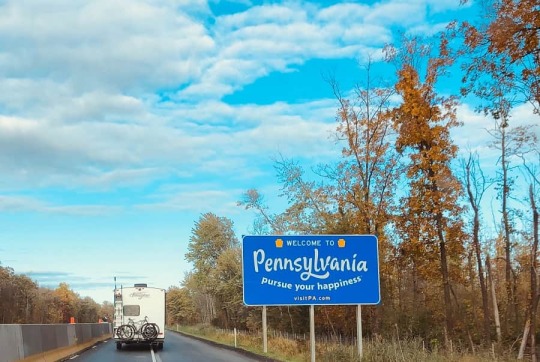
View On WordPress
0 notes
Text

Gettysburg National Park
Gettysburg, Pennsylvania
I love places with a lot of history, and this one is one of them.
#east coast#photographers on tumblr#landscape photography#history#nature hikes#architecture#pennsylvania#gettysburg#national parks#national park#colonial history#american colonies#american history#civil war#civil rights#civilization#war#independence#freedom#historical places#historic places#historic towns#travel photography
3 notes
·
View notes
Text
taking relentless severe psychic damage from watching several hours of videos of television commercial advertisements from the United States in December 1999.
a world-historical moment, an all-time high peak of self-assured smirking arrogance.
ascendant home computers and internet modems. a new millennium! a time after Cold War but before Nining Leven, with saxophone-playing heads of state and cheery Spielbierg-ian sentimentality attempting to plaster over 1970s/1980s disappointments and hangovers with renewed millennarian End-Of-History optimism.
come celebrate with us! look at these images of The Nation! from sparkling Times Square and the cast of "Friends" in bustling cosmopolitan New York City, to sunny Californian prosperity, to those cartoonish frogs in the quasi-mythical Deep South-ish rural periphery of Budweiser ads, and all the suburban Midwestern Kay's Jeweler's in between! planetary hegemony. "Head east from the Colosseum, across the ruts of chariots, and you'll find an imperial estate built by a second-century Caesar. It's a rough ride. And if the agile and durable Chevy Tracker can handle these ancient roads, driving back home will be a walk in the park. Chevy Tracker: It Gets Around!"
or perhaps "our" power extends beyond this terrestrial imperium, into space, conquering the stars. UFOs; space aliens; The X-Files; Independence Day; Space Jam; Men in Black; the Phoenix Lights; Coast to Coast AM on the radio; Space Command in Colorado Springs.
the anxious fragility belied by the desperate constant promotion of an almost religious dedication to recognizable icons.
talking chihuahuas, marketing jingles, annual football game events. self-referential circular cross-promotion maelstrom.
"An all-new holiday spectacular, a Christmas special destined to become a family classic! With music from REM's Michael Stipe, voiced by Ally McBeal's Peter MacNicol, and starring Drew Barrymore! It's Olive the Other Reindeer! At 8/7 Central Fox Friday!"
trying to insist that this "classic" cultural iconography binds us. it has always lived in your heart. fabricating in real-time a supposedly shared history, insisting on this "reality" even at the moment of its very creation. hammering away at the soul.
Daffy Duck saunters in and pronounces: "Eat your way into the new millennium with this 'gigundo' party sub from Subway!"
why aren't you smiling?
84 notes
·
View notes
Text
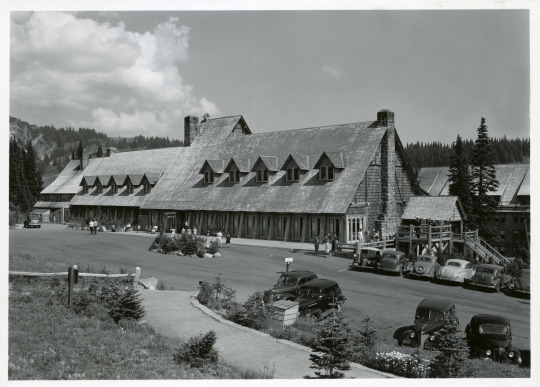

Mount Rainier National Park Archives Photos of the Paradise Inn exterior in 1940-41 (top) and NPS Photo of the Paradise Inn in 2018.
The Paradise Inn was built in 1917 by the Rainier National Park Company concessionaire. While built of wood and stone similar to other NPS rustic-style buildings found in the park, the Paradise Inn is more “whimsical” in design and meant to be reminiscent of European alpine resort architecture. The Paradise Inn is part of the Mount Rainier National Historic Landmark District but is also independently designated a National Historic Landmark for its architectural style.
One of the popular features of the Paradise Inn are the lanterns in the lobby painted with wildflowers. When the inn first opened, it had Japanese lanterns in the lobby, as seen in this 1919 photo of the interior:

Mount Rainier National Park Archives Photos of the Paradise Inn interior in 1919 with Japanese lanterns.
The first lampshades featuring wildflowers were added in the 1930s, mostly painted by the wives of rangers at the time, and the current lampshades were painted by retired Chief Naturalist Dale Thompson in 1989.

NPS Photo of wildflower lanterns inside the Paradise Inn, 2018.
Have you visited the Paradise Inn during the summer and viewed the wildflower lanterns in the lobby?
#Mount Rainier History#mount rainier national park#Paradise Inn#Paradise#history#architecture#national historic landmark#national historic landmark district
54 notes
·
View notes
Note
The Biden administration is removing William Penn from Philadelphia.
New plans by the National Park Service to renovate Old City’s Welcome Park include removing the centerpiece statue of William Penn permanently and redesigning the park to highlight Native American history — a move that has angered Pennsylvania’s Republican leadership.
The plan is a major shift, considering that the park was built on the site of Penn’s home, the Slate Roof House, and is named for the ship, Welcome, that transported him from England. Penn actually landed first in 1682 near the intersection of the Delaware River and Chester Creek in Chester.
Welcome Park is part of Independence National Historical Park and was completed in 1982 on designs by Venturi, Scott Brown and Associates to commemorate the 300th anniversary of Penn’s arrival.
The wide-open park across from the former site of City Tavern aims to tell the story of Penn’s vision for the city. Although a lesser-known area of Independence Park, it provides visitors with an overview of the city layout and history of Penn’s landing. The Penn statue includes a farewell ode to Philadelphia, imparting “what love, what care, what service, what travail have there been to bring thee forth.”
Now, the National Park Service wants to rehabilitate the park in time for the 250th birthday celebration of America in 2026. The park on Second Street between Chestnut and Walnut Streets has fallen into disrepair with rows of broken granite floor.
Representatives for the National Park Service could not be reached for comment Monday. They are seeking public comment on the proposal, according to their website.
Plans announced Friday call for “an expanded interpretation of the Native American history of Philadelphia” in consultation with Indigenous nations of the Haudenosaunee, Delaware Nation, Delaware Tribe of Indians, Shawnee Tribe, and the Eastern Shawnee Tribe of Oklahoma.
Designs would keep some parts of the current park, including the original Philadelphia street grid, but the “Penn statue and Slate Roof House model will be removed and not reinstalled,” according to the plans.
Republican outcry
“The decision by President Biden and his administration to try and cancel William Penn out of whole cloth is another sad example of the left in this country scraping the bottom of the barrel of woke-ism to advance an extreme ideology and a nonsensical view of history,” Pennsylvania House Republican Leader Bryan Cutler (R., Lancaster) said in a statement.
Cutler said the treaty signed by Penn with Native Americans was historical and with “mutual respect shown between Penn and Native tribes.”
“This issue is also deeply personal to me,” Cutler said. “The first Cutlers came to Pennsylvania in 1685 on the ship Rebekah, not long after Penn’s arrival in 1682. They came to Pennsylvania because they were Quakers who shared Penn’s view of religious tolerance and peace.”
Cutler said removing the statue creates an “absurd and revisionist view of our state’s history.” He said he plans to introduce a resolution honoring William Penn and “encouraging” the National Park Service to halt the plan.
Pennsylvania State Sen. Scott Martin (R., Berks) and chair of the Senate Appropriations Committee, on social media called the plan “absolutely disgraceful.”
Native Americans
Welcome Park, though not necessarily the statue of Penn, has also been the site of some resentment among Native Americans. The plot had been given to the Haudenosaunee (Six Nations from the Iroquois Confederacy) in January 1755 by John Penn, William Penn’s grandson. In the 1700s, Native American groups often visited Philadelphia for diplomatic and trade meetings. They sometimes numbered in the hundreds and visited so frequently that John Penn asked the Provincial Council of Philadelphia to consider setting aside a piece of land for these gatherings. The delegations often refused to negotiate treaties until they could stand on their own ground and build a council fire.
A 2020 Inquirer article chronicled a trip by six women from the Iroquois Confederacy in upstate New York to reconnect with the patch of tribal land on the site of Welcome Park.
“I anticipated a park in a natural pristine state. Like any other park, it would have trees, grass, water,” said Louise McDonald (Native name Wa’kerakátste), a Mohawk Bear Clan Mother from Akwesasne, N.Y. “I was frozen for a minute because I felt it had been choked and that it wasn’t a true representation of the original intentions of the space. It just seemed to be purposely buried with a cover-up narrative. There certainly seems to be a feeling of erasure intended to remove any spirit that would imply that we were once there.”
Penn in Philly
William Penn’s likenesses will still remain in Philly. The statue of Penn atop City Hall is a landmark, visible from many parts of the city.
And there is another Penn statue at Penn Treaty Park off North Delaware Avenue at the corner of East Columbia Avenue and Beach Street. Legend says Penn and a local Lenape clan made a peace agreement under an elm tree. The original “treaty elm” has long been replaced, but the park contains an obelisk and plaque memorializing the agreement, as well as a statue of Penn.
The discussion of the Penn statue’s removal is not the first time in recent years that Philadelphia has seen a struggle over statues.
The statue of Frank L. Rizzo, the late mayor and police commissioner, was ordered removed from in front of the Municipal Services Building in 2020 by then-Mayor Jim Kenney amid sweeping protests after the murder of George Floyd. Also in recent years, people have petitioned to have the Christopher Columbus statue in Marconi Plaza removed, though it still remains.
_______________________________________
Time to start finding problematic people the folks on the left like and tearing monuments to them down, maybe Fredrick Douglas was sexist, we already know MLK was a Zionist that should count against him for some people, know who else was a Zionist


Wonder where the "Ruth Sent Us" group is now.......
Maybe we find something bad Harriet Tubman did and start to disqualify her, she may have been mean to native Americans or something.
Given enough time they're going to find something wrong with everyone that has a statue eventually.
Start with every single statue and bust of karl marx
41 notes
·
View notes
Text
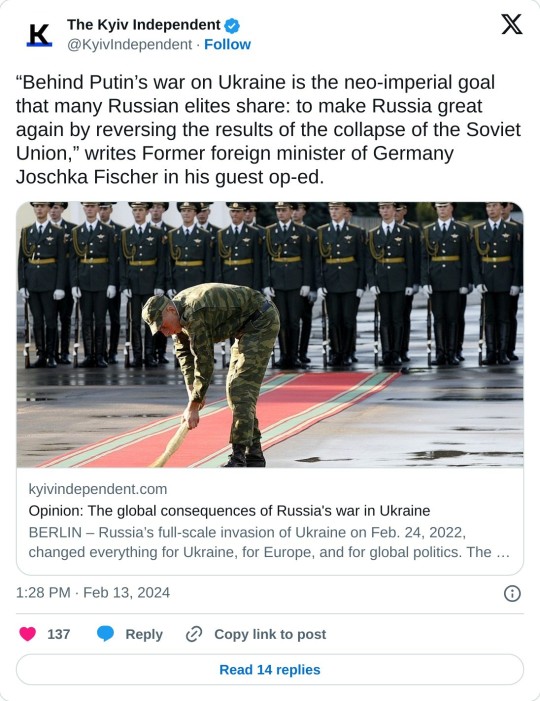
BERLIN – Russia’s full-scale invasion of Ukraine on Feb. 24, 2022, changed everything for Ukraine, for Europe, and for global politics. The world entered a new era of great-power rivalry in which war could no longer be excluded. Apart from the immediate victims, Russia’s aggression most concerned Europe. A great power seeking to extinguish an independent smaller country by force challenges the core principles upon which the European order of states has organized itself for decades.
Russian President Vladimir Putin’s war stands in stark contrast to the self-dissolution of the Warsaw Pact and the Soviet Union, which occurred in a largely non-violent manner. Since the “Gorbachev miracle” – when the Soviet Union started pursuing liberalizing reforms in the 1980s – Europeans had begun to imagine that Immanuel Kant’s vision of perpetual peace on the continent might be possible. It was not.
The problem was that many Russian elites’ interpretation of the globally significant events of the late 1980s could not be more opposed to Kant’s idea. They saw the demise of the great Russian empire (which the Soviets had recreated) as a devastating defeat. Though they had no choice but to accept the humiliation, they told themselves they would do so only temporarily until the balance of power had changed. Then the great historical revision could begin.
Thus, the 2022 attack on Ukraine should be viewed as merely the most ambitious of the revisionist wars Russia has waged since Putin came to power. We can expect many more, especially if Donald Trump returns to the White House and effectively withdraws the United States from NATO.
But Putin’s latest war not only changed the rules of co-existence on the European continent; it also changed the global order. By triggering a sweeping re-militarization of foreign policy, the war has seemingly returned us to a time, deep in the twentieth century, when wars of conquest were a staple of the great-power toolkit. Now, like then, might makes right.
Even during the decades-long Cold War, there was no risk of a “new Sarajevo” – the political fuse that detonated the first World War – because the standoff between two nuclear superpowers subordinated all other interests, ideologies, and political conflicts. What mattered were the superpowers’ own claims to power and stability within the territories they controlled. The risk of another world war had been replaced by the risk of mutual assured destruction, which functioned as an automatic stabilizer within the bipolar system of the Cold War.
Behind Putin’s war on Ukraine is the neo-imperial goal that many Russian elites share: to make Russia great again by reversing the results of the collapse of the Soviet Union. On December 8, 1991, the presidents of Russia, Belarus, and Ukraine met in Białowieża National Park and agreed to dissolve the Soviet Union, reducing a “superpower” to a regional (albeit still nuclear-armed) power in the form of the Russian Federation.
No, Putin does not want to revive the communist Soviet Union. Today’s Russian elite knows that the Soviet system could not be sustained. Putin has embraced autocracy, oligarchy, and empire to restore Russia’s status as a global power, but he also knows that Russia lacks the economic and technological prerequisites to achieve this on its own.
For its part, Ukraine wants to join the West – meaning the European Union and the transatlantic security community of NATO. Should it succeed, it would probably be lost to Russia for good, and its own embrace of Western values would pose a grave danger to Putin’s regime. Ukraine’s modernization would lead Russians to ask why their political system has consistently failed to achieve similar results. From a “Great Russia” perspective, it would compound the disaster of 1991. That is why the stakes in Ukraine are so high, and why it is so hard to imagine the conflict ending through compromise.
Even in the case of an armistice along the frozen front line, neither Russia nor Ukraine will distance themselves politically from their true war aims. The Kremlin will not give up on the complete conquest and subjugation (if not annexation) of Ukraine, and Ukraine will not abandon its goal of liberating all its territory (including Crimea) and joining the EU and NATO. An armistice thus would be a volatile interim solution involving the defense of a highly dangerous “line of control” on which Ukraine’s freedom and Europe’s security depend.
Since Russia no longer has the economic, military, and technological capabilities to compete for the top spot on the world stage, its only option is to become a permanent junior partner to China, implying quasi-voluntary submission under a kind of second Mongol vassalage. Let us not forget: Russia survived two attacks from the West in the nineteenth and twentieth centuries – by Napoleon and Hitler, respectively. The only invaders who have conquered it were the Mongols in the winter of 1237-38. Throughout Russia’s history, its vulnerability in the east has had far-reaching consequences.
The main geopolitical divide of the twenty-first century will center on the Sino-American rivalry. Though Russia will hold a junior position, it nonetheless will play an important role as a supplier of raw materials and – owing to its dreams of empire – as a permanent security risk. Whether this will be enough to satisfy Russian elites’ self-image is an open question.
21 notes
·
View notes
Text
Elizabeth S. Hamilton at the Constitutional Convention, June 1797
Elizabeth Schuyler attended a diplomatic meeting at the age of 6; as a teenager, she hosted politicians solo; her relationship with George Washington predates Alexander Hamilton's. As a married adult, she stood in for Martha Washington, she led the Republican Court in NYC, she led charitable endeavors, and she hosted any number of national and international figures, from bankers to politicians, etc. U.S. presidents through the 1840s paid homage to her. But as so many women of the early Republic were, she was pretty deliberately erased. Particularly excised were the contributions and political activism of the Federalist wives - the amount of influence these women had could not be discussed.
And so by the late 20th century, we have historians writing that ESH didn't like politics and was sickly, usually pregnant, and often absent from her husband, but at least she tried to make a nice cozy environment for the Great Alexander Hamilton to go home and snuggle in, or something like that, as though it didn't occur to these historians that Elizabeth Schuyler likely could have married any number of wealthy, accomplished (and distant relative) men and lived a very comfortable life of luxury in Albany. And yet she looked at the super-charismatic guy who everyone said was brilliant, but with no steady income, not even a lawyer yet and with no ties to Albany, but noted as highly ambitious and said, "yep, he's the one!" Spoiler: she did it because she was ambitious herself and recognized that theirs could be a strong strategic/political partnership, in addition to a strong marriage. (I'm sure it was also good for her ego that he declared himself her best friend after only a few weeks and was so far gone he couldn't remember a military password after an evening with her.)
This erasure led to the common assumption that Elizabeth was not in Philadelphia at the Constitutional Convention in summer 1787. However, statutesandstories.com has posted about new evidence - really, a more careful examination and reading of old documents - that ESH was in Philadelphia in June 1797, and was likely in the city at the time of AH's June 18th speech to the convention. The theory is that she traveled with the Knoxes from NYC to Philadelphia, as she's mentioned in a letter from Knox that she is traveling with them, and she's definitely with AH on June 19th, as they are recorded in a journal/diary at a social engagement also attended by George Washington. Additional conjecture that this letter from AH can be more tightly dated to this period, considering these lines:
I cannot yet determine what will be our stay here and consequently I can make no determinations about my love; but I feel that it will be impossible for me to submit to a long separation however inconvenient it may be to incur the expence which will attend her coming here.
Which may align with EH borrowing money for this travel from her brother-in-law, Stephen van Rensselaer, also possibly more tightly dated to this period.
Please check out the well-cited posts (3 parts): 1, 2, and 3
Although no Hamilton biographers have discussed Eliza’s trip to the Convention in June, historians from Independence National Historic Park (INHP) concluded in the 1980s that Eliza was one of as many as nine wives who likely “attended” the Convention. Part 4 (pending) will discuss Eliza Hamilton’s relationship with the other eight wives who likely were in Philadelphia during the Convention, including Rufus King’s wife, Mary Alsop King, who was a native New Yorker.
This makes total sense to me - not just the documentation presented, but that she would have shown up to perform soft politicking/diplomacy around her husband's activities, in addition to a possible role assisting him in the drafting and editing of his speech. The daughter of Philip Schuyler and Catharine Van Rensselaer wasn't going to sit in NYC on the sidelines for this - she bolstered Hamilton not only in the ways she was personally helpful to him (emotionally, but also going over his writings and speeches with him), but through her representation of the wealthy Dutch-American interests, showing that Hamilton was a junior delegate from NY with a lot of political and financial power backing him.
As the blog states:
Yet it remains possible that Eliza may have helped her husband prepare for his one-of-a-kind speech on June 18. Moreover, it is felt that the possibility of informal, behind-the-scenes contributions by Eliza cries out for further examination.
Cause ya know, she's not discussing new threads for her needlework and thoughts on child-weaning at all these social gatherings or standing in for Martha Washington and chatting with Martha's husband about the best ways to make pastry.
And I just love if she helped advise him on a speech that only the "rich and well-born" can make a strong government. I'm sure they felt quite haughty and proud and said, "let's make another baby!" (James Alexander Hamilton was born around 9 months later.)
13 notes
·
View notes
Text

15 𝙄𝙣𝙩𝙚𝙧𝙚𝙨𝙩𝙞𝙣𝙜 𝙁𝙖𝙘𝙩𝙨 𝘼𝙗𝙤𝙪𝙩 𝙀𝙩𝙝𝙞𝙤𝙥𝙞𝙖🇪🇹
1. The Ethiopian 🇪🇹 calendar is different from the Gregorian calendar. There are thirteen months in the Ethiopian calendar, which means they are currently in 2014.
2. Ethiopians 🇪🇹 also measure the hours of a day to a different schedule based on the logic that the clock starts when the day does. Ethiopia, however, observes 13 calendar months per year. This makes the Ethiopian calendar 7 years behind the rest of the world.
3. Ethiopia 🇪🇹 is the only African country never to have been brought under colonial rule. The Itàlians tried but failed woefully and were defeated by the solid Ethiopian forces.
4. Ethiopia 🇪🇹 has the world's 0ldest Bible and the most unique.
5. Ethiopia 🇪🇹 is home to one of the world's best coffee. In fact, coffee production is huge in Ethiopia.
6. According to some archaeological findings, Ethiopia 🇪🇹 is the cradle of humànkind. Meaning lifè actually started in Ethiopia.
7. In 1960, an Ethiopian named Abebe Bikila became the first Black African to win gold in the Olympics. He won it by running barefoot.
8. Addis Ababa's name translates to ‘New Flower’ in Amharic. The city is one of the oldest cities in the world.
9. Ethiopia 🇪🇹 is home to some of the world's tastiest, healthiest and most diverse cuisines on the continent of Africa.
10. The biggest festival in Ethiopia, Timket, is a three-day annual festival that honours the baptism of Jesus Christ in the river Jordan. It's one of the world's largest festivals that takes place annually. The festival attracts millions of people from all over the world.
11. Ethiopia 🇪🇹 has the most UNESCO World Heritage Sites on the continent. Ethiopia takes first place as the African country with the most UNESCO World Heritage sites. There are 9 total ranging from religious sites to natural areas. Among them are the Simien National Park, Konso Cultural Landscape and the rock-hewn churches.
12. Over 80 languages are spoken in Ethiopia. There are over 80 languages spoken with English being the language of educational systems in addition to local languages which include Oromo, Amharic, Somali and Tigrinya.
13. Over half of Africa’s mountains are in Ethiopia 🇪🇹 Along with Ethiopia’s incredible cultural and historical significance, the natural beauty is in a league of its own. In addition to a gorgeous landscape of low desserts and volcanic plateaus, Ethiopia is incredibly mountainous. In fact, around 70% of Africa’s mountains are in Ethiopia.
14. Ethiopia 🇪🇹 is Africa’s oldest country. Originally founded in 980 BC, Ethiopia is the oldest independent nation on the continent. Additionally, Ethiopia has remnants of some of the most ancient human beings on earth dating back millions of years making it one of the most important archaeological areas in the world. Not only that, but it is the second most populated country with more than 106 million people.
15. Ethiopia 🇪🇹 is the only country in the world with its own unique Alphabet.
48 notes
·
View notes
Text

The Dream Garden
Publisher Cyrus Curtis was familiar with the work of Maxfield Parrish, whose magazine illustrations were highly popular and distinctive. He commissioned Parrish to design a mural for the entrance to the lobby of the Curtis Publishing Company (Philadelphia) and asked glass master Louis Comfort Tiffany to fabricate it. Facing Independence National Historical Park, the breathtaking mural was installed in 1916 and was the only collaboration between these two significant artists. The mural is composed of hundreds of thousands of irreplaceable glass tesserae ...
20 notes
·
View notes
Text
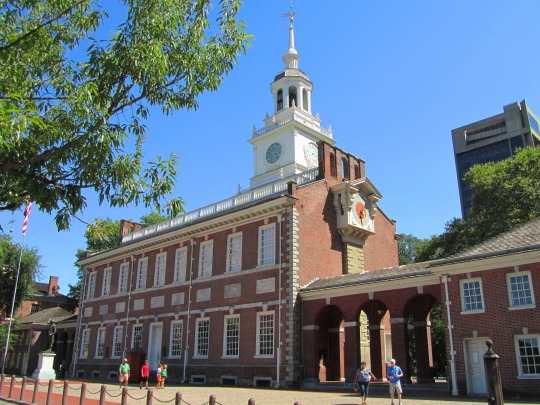
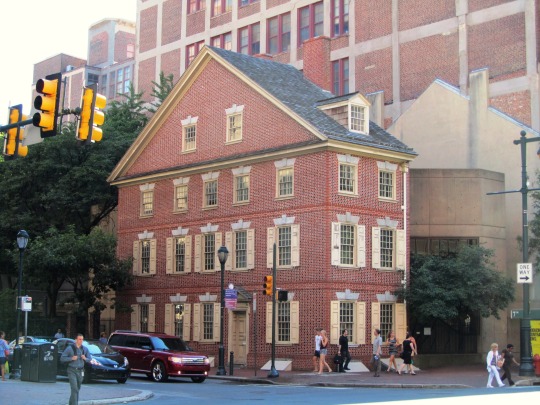

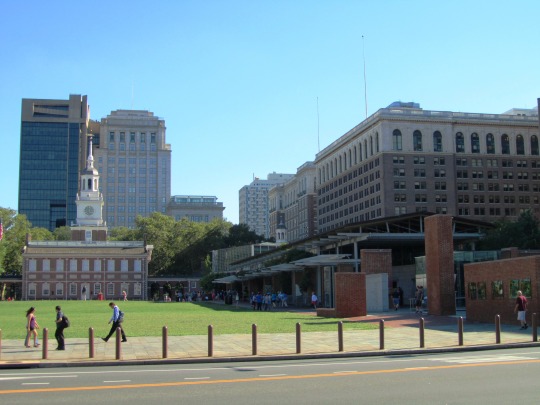
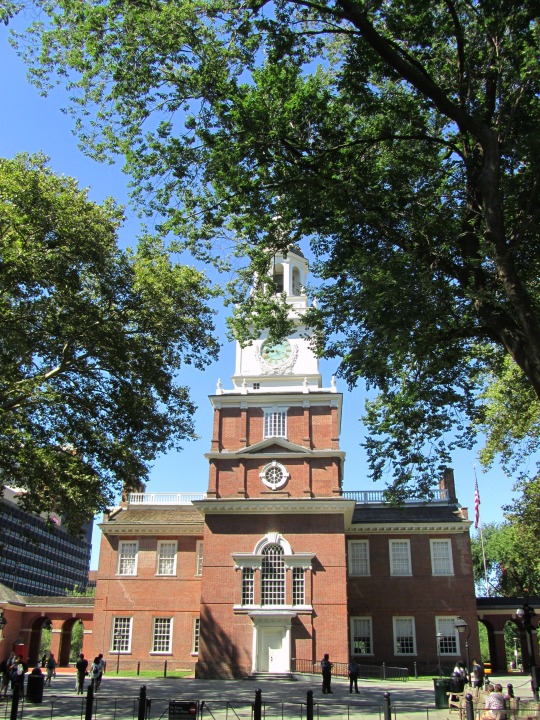




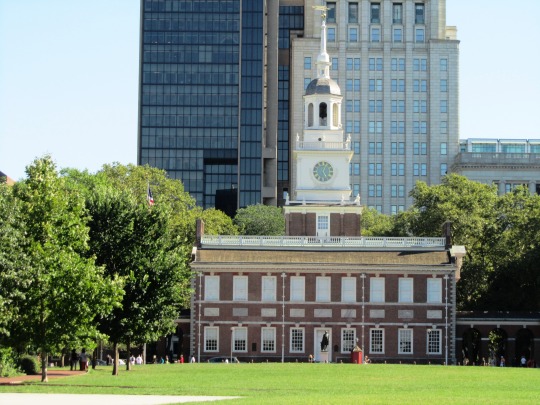
The United States Constitution was signed in Philadelphia on September 17, 1787.
#United States Constitution#US Constitution#signed#Philadelphia#17 September 1787#travel#original photography#vacation#tourist attraction#landmark#architecture#cityscape#summer 2013#anniversary#US history#Independence Hall#Independence National Historical Park#Declaration House#Congress Hall#USA#Pennsylvania
2 notes
·
View notes
Text
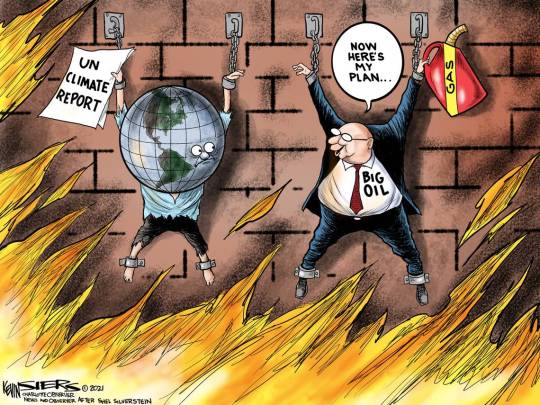
LETTERS FROM AN AMERICAN
December 27, 2023
HEATHER COX RICHARDSON
DEC 28, 2023
Fifty years ago tomorrow, on December 28, 1973, President Richard Nixon signed the Endangered Species Act into law. Declaring that Congress had determined that “various species of fish, wildlife, and plants in the United States have been rendered extinct as a consequence of economic growth and development untempered by adequate concern and conservation,” the act provided for the protection of endangered species.
Just over a decade before, in 1962, ecologist Rachel Carson had published Silent Spring, documenting how pesticides designed to eliminate insects were devastating entire ecosystems of linked organisms. The realization that human destruction of the natural world could make the planet uninhabitable spurred Congress in 1970 to create the Environmental Protection Agency. And in 1973, when Nixon called for stronger laws to protect species in danger of extinction, 194 Democrats and 160 Republicans in the House—99% of those voting—voted yes. Only four Republicans in the House voted no.
Such strong congressional support for protecting the environment signaled that a new era was at hand. While President Gerald Ford, who succeeded Nixon, tended to dial back environmental protections when he could in order to promote the development of oil and gas resources, President Jimmy Carter pressed the protection of the environment when he took office in 1977.
In 1978, Carter placed 56 million acres of land in Alaska under federal protection as national monuments, doubling the size of the national park system. “These areas contain resources of unequaled scientific, historic and cultural value, and include some of the most spectacular scenery and wildlife in the world,” he said. In 1979 he had 32 solar panels installed at the White House to help heat the water for the building and demonstrate that it was possible to curb U.S. dependence on fossil fuels. Just before he left office, Carter signed into law the Alaska National Interest Lands Conservation Act, protecting more than 100 million acres in Alaska, including additional protections for the Arctic National Wildlife Refuge.
Oil companies, mining companies, timber companies, the cattle industry, and local officials eager for development strongly opposed Carter’s moves to protect the environment. In Alaska, local activists deliberately broke the regulations in the newly protected places, portraying Carter as King George III—against whom the American colonists revolted in 1776—and insisting that the protection of lands violated the promise of life, liberty, and the pursuit of happiness promised in the Declaration of Independence.
For the most part, though, opposition to federal protection of the environment showed up as a drive to reform government regulations that, opponents argued, gave far too much power to unelected bureaucrats. In environmental regulations, the federal government’s protection of the public good ran smack into economic development.
In their 1980 presidential platform, Republicans claimed to be committed to “the conservation and wise management of America’s renewable natural resources” and said the government must protect public health. But they were not convinced that current laws and regulations provided benefits that justified their costs. “Too often,” they said, “current regulations are…rigid and narrow,” and they “strongly affirm[ed] that environmental protection must not become a cover for a ‘no-growth’ policy and a shrinking economy.”
In his acceptance speech for the Republican presidential nomination, Ronald Reagan explained that he wanted to see the U.S. produce more energy to fuel “growth and productivity. Large amounts of oil and natural gas lay beneath our land and off our shores, untouched because the present Administration seems to believe the American people would rather see more regulation, taxes and controls than more energy.”
In his farewell address after voters elected Reagan, Carter urged Americans to “protect the quality of this world within which we live…. There are real and growing dangers to our simple and our most precious possessions: the air we breathe, the water we drink, and the land which sustains us,” he warned. “The rapid depletion of irreplaceable minerals, the erosion of topsoil, the destruction of beauty, the blight of pollution, the demands of increasing billions of people, all combine to create problems which are easy to observe and predict, but difficult to resolve. If we do not act, the world of the year 2000 will be much less able to sustain life than it is now.”
“But,” Carter added, “[a]cknowledging the physical realities of our planet does not mean a dismal future of endless sacrifice. In fact, acknowledging these realities is the first step in dealing with them. We can meet the resource problems of the world—water, food, minerals, farmlands, forests, overpopulation, pollution if we tackle them with courage and foresight.”
Reagan began by appointing pro-industry officials James G. Watt and Anne M. Gorsuch (mother of Supreme Court justice Neil Gorsuch) as secretary of the interior and administrator of the Environmental Protection Agency, respectively; they set out to gut government regulation of the environment by slashing budgets and firing staff. But both resigned under scandal in 1983, and their replacements satisfied neither those who wanted to return to the practices of the Carter years nor those who wanted to get rid of those practices altogether.
Still, with their focus on developing oil and gas, when workers repairing the White House roof removed the solar panels in 1986, Reagan administration officials declined to reinstall them.
Forty years later, we are reaping the fruits of that shift away from the atmosphere that gave us the Endangered Species Act and toward a focus on developing fossil fuels. On November 30 the World Meteorological Organization (WMO), an agency of the United Nations, reported that global temperatures in 2023 were at record highs both on land and in the seas, Antarctic sea ice extent is at a record low, and devastating fires, floods, outbreaks of disease, and searing heat waves have pounded human communities this year.
The WMO released this provisional report the same day that the U.N. Climate Change negotiations, known as COP28, began in the United Arab Emirates. United Nations Secretary-General António Guterres urged leaders to commit to act to address climate change, while there was still time to avoid “the worst of climate chaos.” After a year in which countries staggered under extreme weather events, climate change is on people’s minds: nearly 80,000 people, including world leaders and celebrities, registered to attend COP28.
After the convention ended on December 13, Umair Irfan of Vox summarized the agreement hashed out there. For the first time in 27 such conventions, countries explicitly called for the phasing out of fossil fuel…but they didn’t say when or by how much. After taking stock of what countries are doing to address climate change, the meeting concluded that efforts to reduce emissions, invest in technology, adapt to warming, and help suffering countries are all falling short.
In addition to acknowledging the need to move away from fossil fuels, COP28 agreed to cut methane, boost renewable energy considerably, and help countries that are dealing with the fallout from climate change: island nations, for example. But emissions of greenhouse gases continue to rise, and the hope of limiting warmer temperatures to 1.5 degrees Celsius now seems a long shot. Still, renewable energy capacity grew nearly 10% in 2022, led by solar and wind power.
Today President Joe Biden used the anniversary of the Endangered Species Act to reclaim the spirit of the era in which it was written, urging Americans to protect ecosystems and biodiversity, “honor all the progress we have made toward protecting endangered species,” and to “come together to conserve our planet.” He noted that thanks to the Inflation Reduction Act, the Biden-Harris administration has been able to invest billions of dollars in forest management, ecosystem restoration, and protection of watersheds, as well as making historic investments in addressing climate change, and that, as president, he has protected more lands and waters than any president since John F. Kennedy.
And yet the forces that undermined that spirit are still at work. In the 2022 West Virginia v. Environmental Protection Agency decision, the Supreme Court claimed that Congress could not delegate “major questions” to executive agencies, thus limiting the EPA’s ability to regulate the emissions that create climate change; and House Republicans this summer held a hearing on “the destructive cost of the Endangered Species Act,” claiming that it “has been misused and misapplied for the past 50 years” with “disastrous effects on local economies and businesses throughout the United States.” Chair of the House Committee on Natural Resources Bruce Westerman (R-AR) accused the Biden administration of stifling “everything from forest management to future energy production through burdensome ESA regulations.”
While in 1980 voters could react to such a contrast between the parties’ environmental visions ideologically, in 2023, reality itself is weighing in. Brady Dennis of the Washington Post noted today that in this era of rising waters and epic storms, North Carolina has become the fourth state, along with South Carolina, New York, and New Jersey, to require home sellers to disclose their home’s flooding history and flood risk to prospective buyers.
LETTERS FROM AN AMERICAN
HEATHER COX RICHARDSON
#environmentalist#environmental law#climate change#climate emergency#Letters From An American#Heather Cox Richardson#Endangered Species Act#EPA#Environmental Protection Agency#history
11 notes
·
View notes
Text
M*A*S*H (not that one)
I went to Manderley again--rewatched the Altman M*A*S*H. Completely worrying pattern, being nearly exactly one year after the first time I saw it. If I end up watching M*A*S*H (1970) in the last weeks of August every year that’s going to wind me up on some sort of list. By women. And they’ll be right.
I hadn’t known at first, but the eventual realization was as inevitable as anything in the movie, a sort of regrettable slide of “no, I’m gonna.” Why does anyone do the things they do in M*A*S*H. Why does anyone do M*A*S*H. Both of these questions don’t have question marks because it’s just already happening.
There are some attenuating circumstances, sure. War, weather, Robert Altman, a friend, a kind of numb seeking for the sword of time that will pierce your skin. Elliott Gould, probably, also.
If you embark on a Hot ‘70s Summer, you don’t actually leave it. Winter just falls, and you go into that mode of the ‘70s, bundling up in inadequate materials against the cold, and still somehow, feel cozy. But before that turn, those still, hot weeks hanging hazy at the top of the year, the most Hot ‘70s Summer, 1970, the most ‘70 movie to ever exist: Robert Altman’s M*A*S*H.
I was an hour and thirty minutes into it before I remembered with a little twitch that at some point, in the beginning, this was set in the 1950s. Hilarious to recall. Maybe it’s the 1950s in Richard Hooker’s book about his time in a Korean War field hospital, also titled M*A*S*H; I do not know. I simply know it is not the 1950s here, it is well 1969 precisely, at filming, and America has just achieved its dismal high water mark for the number of troops currently deployed in Vietnam. This is Vietnam. It’s not Korea, it’s not Japan, it’s the crest of the Vietnam War in a mountain park in California, and a nation knew that immediately, knew that with everything they had, which was mostly nihilism.
M*A*S*H (1970) dir. Robert Altman is probably the most historically specific film object I have ever seen. You cannot navigate, valuably, anything this movie is doing outwith its historical and cultural context. Some works of art are timeless, and on the other end there is M*A*S*H, made OF time, yanked out of the fabric of it with film cameras rolling and a sound mix that says: all of it, and that act winds up changing what will happen--historically, culturally--as time continues on.
M*A*S*H is its time. It meets America head-on, and leers. It’s not that it breaks something in the culture, it just reflects back something that was already broken, the people already scarring over. M*A*S*H only works if you’re watching it knowing that. Not to be didactic. Something the movie resolutely refuses to be, at any moment, which causes audiences today, removed from the milieu, to question, alarmed, do they know? Do they know that they're awful? Oh yes. Do they also take delight in their being awful? Oho yes. We are all broken. :).
The tagline of this movie, still on a lot of the posters you’ll see, was “M*A*S*H gives a D*A*M*N.” This is so curious to me. It is either a straight up lie, or a key. This would appear a movie predominately peopled with characters who seem, in kind of post-modern incongruity with their surroundings, almost implacably non-committal. Removed, irreverent, careless. Sure it turns callous, sure in trying to deflect the stupid brutality of war they often just end up turning brutal stupidity onto others. A catalog of non-definite acts, something to mask the desperation.
I think a lot about this one Chris Fleming video where he said something like, “ever since my parents grasped that a movie can still be good even if it doesn’t make you feel good, they’ve been going absolutely ham at the independent theater.” Realizing this really does open up your world, and also gets you on lists (I deserve to be there!!). This is how lightly sweating in a slowly turning fan at the end of summer you think, mm, gonna watch M*A*S*H…
Why? Vibes. But the vibes are bad. Yeah I know. But they’re also….I think the phrase I used in a message to the friend I first watched this movie with, as soon as those opening credits started playing over me again, was “badly enchanting.” There’s something about the way it looks, the way it sounds. Khaki-colored sunlight and dirt and those Japanese covers of old standards playing through a PA system. That Altman calling card layered up dialogue where they somehow arrange it just-so so that you still hear the parts you’re supposed to, god.
This is how you end up saying, oh this movie is not like, a nice time, I occasionally quite dislike the sensation of watching it, and yet also, sometimes it's just what I want to watch. I don’t know, it’s AltM*A*S*H. One minute I’m thinking, incredible that you thought this was funny, and then the next I’m like, you are the only people who understand this particular thing I think is funny. Primarily in that though it’s three things: 1. unhinged heavily metatextual opening and closing pacing & especially this narrating voice at the end just being like “welp, that was that” and rapidly rehashing clips of the cast at ever increasing speed, 2. two Bud Cort moments, 3. GaryBurghoffRadarO’Reilly.
This is the juncture where I get off actually, because if I keep going in this mode about the completely insane thing that somehow happened next, to M*A*S*H and to me, M*A*S*H (1972-1983), we'd be here 10 years and I would die, whichever comes first.
But I will tell you one thing! Just one thing!!! If I’m in what, 1972, much like I was 2022, and they’re like, there’s gonna be a M*A*S*H TV show, and the one person who will be the same is that kid Radar, I’m like oh, of course, the most character who can travel between worlds performance of all time.
#here is a thousand words on the film “M*A*S*H”#M*A*S*H (1970)#Robert Altman#M*A*S*H hours#Wellntruly's Watch Log
20 notes
·
View notes
Text
By: Aleks Phillips
Published: Jul 7, 2023
An Indigenous tribe descended from the Native American nation that originally controlled the land in Vermont the Ben & Jerry's headquarters is located on would be interested in taking it back, its chief has said, after the company publicly called for "stolen" lands to be returned.
Don Stevens, chief of the Nulhegan Band of The Coosuk Abenaki Nation—one of four descended from the Abenaki that are recognized in Vermont—told Newsweek it was "always interested in reclaiming the stewardship of our lands," but that the company had yet to approach them.
It comes after the ice cream company was questioned as to when it would give up its Burlington, Vermont, headquarters—which sits on a vast swathe of U.S. territory that was under the auspices of the Abenaki people before colonization.
"The U.S. was founded on stolen Indigenous land," the company said in a statement ahead of Independence Day. "This year, let's commit to returning it."
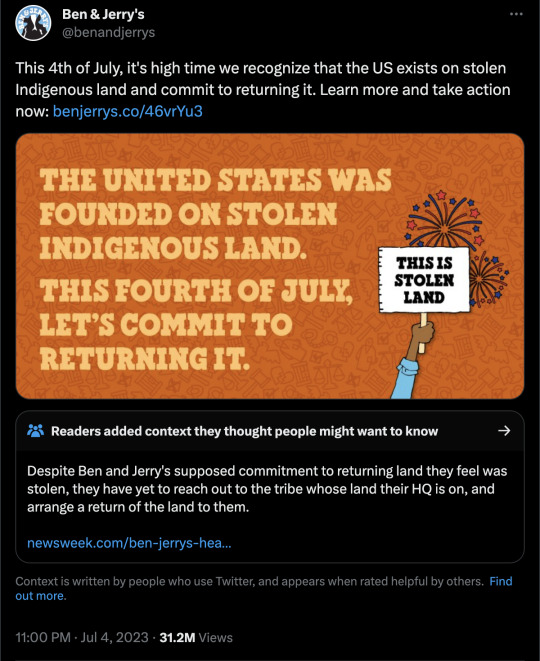
It added that the "land back" movement was about "ensuring that Indigenous people can again govern the land their communities called home for thousands of years," but focussed much of its statement on the taking of land from the Lakota in South Dakota.
The acknowledgment of historic tribal lands is a contentious subject, pitting the claims of Native Americans, whose ancestors were subject to violent persecution and displacement, against the status quo of a modern nation with entrenched borders.
While some say colonized ancestral lands should be at least partially returned, others say that it is impossible to decide which of the various groups to have claimed land throughout history it should be returned to.
Maps show that the Abenaki—a confederacy of several tribes who united against encroachment from a rival tribal confederacy—controlled an area that stretched from the northern border of Massachusetts in the south to New Brunswick, Canada, in the north, and from the St. Lawrence River in the west to the East Coast.
This would put Ben & Jerry's headquarters, located in a business park in southern Burlington, within the western portion of this historic territory—though it does not sit in any modern-day tribal lands.
"We are always interested in reclaiming the stewardship of our lands throughout our traditional territories and providing opportunities to uplift our communities," Stevens said when asked about whether the Nulhegan Abenaki Tribe would want to see the property handed over to Indigenous people.
While the chief said that the tribe "has not been approached in regards to any land back opportunities from Ben & Jerry's," he added: "If and when we are approached, many conversations and discussions will need to take place to determine the best path forward for all involved."
Ben & Jerry's has not yet publicly responded to calls to return the land its headquarters is situated on.
Newsweek contacted the company via email for comment on Friday.
A spokesperson for the Odanak Council of Abenakis, who now reside near Montreal, Canada, told Newsweek that the council would comment on the matter following their weekly meeting on Monday.
Newsweek also approached the Abenaki Nation of Missiquoi and the Elnu Abenaki Tribe—both recognized in Vermont—via email for comment on Thursday. Contact details for the other state-recognized tribe, the Koasek Traditional Band of the Koas Abenaki Nation, could not immediately be found.
According to historical records, the Abenaki initially traded with European settlers in the 16th century, but their population was afflicted by the spread of Old World diseases. The confederacy allied with French colonizers against English settlers in growing territorial disputes, before many fled to what is now Canada following a series of defeats at the hands of the English.
During the early part of the 20th century, a state-spon.sored eugenics program in Vermont saw some Abenaki sterilized. The Nulhegan Abenaki Tribe has described these acts as "ethnocide."
==
Checkmate.
They weren't stolen, they were conquered, as tribes have attacked, killed or driven out, and conquered each other's lands for thousands of years. Not just in North America, but worldwide. "Handing back" just gives it to the next most recent conquerors. Will they be racked by the inherited guilt of their own ancestors conquering the occupants who preceded them? Should they be? If not, why not?
Social media virtue signalling is cheap and easy. But walking the walk and talking the talk are two different things. High-priced CEOs, college presidents and other elites who espouse "antiracist" shibboleths such as "equity" rarely - although not never - act against their own self-interests by saying something like, "I'm a straight, white upper-middle class woman and I'm going to resign so that a disabled, fat, black, trans lesbian can take this position."
P.S. Community Notes are amazing.
#Aleks Phillips#Ben and Jerry's#Ben & Jerry's#virtue signal#virtue signaling#virtue signalling#land back#stolen land#woke#wokeness#cult of woke#wokeness as religion#wokeism#bluff called#community notes#community notes for the win#community noted#religion is a mental illness
23 notes
·
View notes
Text
“The question led Barton to scholars like David Morgan and Kristen Gremillion, and obscure discoveries in places like Kentucky’s Red River Gorge, a 29,000-acre canyon system in the Daniel Boone National Forest.
Before the Gorge finds, archaeologists “assumed that the peoples of this region just sat around passively, waiting for others to send them the gift of agriculture,” says Morgan, director of the National Park Service’s Southeast Archaeological Center. “But that simply wasn’t the case.”
Plant materials recovered by archaeologists in the Gorge in the 1980s and ‘90s led to a historical revision “that fundamentally alters how we think about indigenous peoples of the [precontact eastern U.S.],” says Morgan. A trove of ancient seeds debunked then-dominant theories “depicting early inhabitants as backwater nomads that didn’t acquire agriculture—and thus the markers of complex society—until after A.D. 1, when maize arrived from Mesoamerica.”
Gremillion, a paleoethnobotanist, chairs the Ohio State University department of anthropology and is the author of Ancestral Appetites: Foods in Prehistory. She started working in the Gorge around 1989, using techniques such as direct radiocarbon dating and high-magnification microscopy to study ancient caches of seeds, food stores, cooking refuse, and human feces. She found specimens buried under massive stone outcroppings and in caves—all in remarkable condition.
“We found things like 3,000-year-old sunflower heads and baskets full of seeds,” says Gremillion, who compares the digs to opening storage vaults. The finds were unprecedented, and old vanguard archaeologists were dismissive. “They said the materials couldn’t possibly be so old.”
Gremillion’s research proved them wrong; the region’s indigenous peoples had been farming for more than 5,000 years. The work helped establish the Eastern Woodlands as an independent center of prehistoric plant domestication and agricultural development—alongside areas like southeast Asia, Mexico, and the Fertile Crescent.”
#appalachia#cherokee#cuisine#ancestral appetite#Kristen gremillion#atlas obscura#nico albert#taelor barton#native american#cooking#recipes#pre contact
200 notes
·
View notes